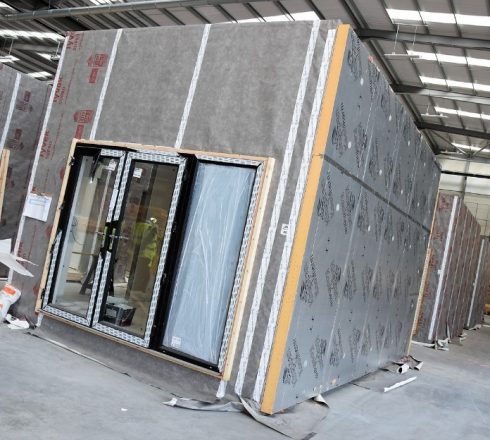Choice is a large part of our everyday lives, whether we’re at the supermarket, coffee shop or a car dealership. We are free to choose our favourite brand of yoghurt, how we like our coffee and whether to buy a three or five-door car.
I recently visited a housing association that is challenging our notion of homeowner choice. Customers are not simply allocated a house. Instead, they can use their smartphone or tablet computer to access an app that enables them to choose every single detail in their new home.
Basildon-based Swan Housing Association serves the local communities of Essex and east London. It currently manages around 11,000 homes and is in the planning and delivery stages of a further 1,000.
It has developed an interesting construction method using volumetric construction which involves stacking and joining factory-finished modules together to form a complete building. So far, so expected.
But Swan Housing has taken this a step further and developed its own factory to construct these homes near to the sites they are building. Why? Well, the basic premise is that a house can be constructed and finished entirely within the factory. It is then delivered to site where the house is simply stacked up and a masonry skin built around it.
The factory works on a production line system with whole floors of houses moving around the factory on cushions of air using very nifty mini hovercrafts – all very impressive.
Once the fabric of the build was established, the interior fit out became something much more akin to a normal construction site with familiar trades installing all the traditional components one would expect.
The process is in a very early development stage with only three houses fully completed on site to date. It is expected that the process will develop as the factory’s experience grows.
We visited one of its largest nearby sites. The three completed show homes were all fascinating and very comfortable places to be. All three houses were well designed, and it was clear how they can offer very desirable places for people to live – you would never know that they were not built traditionally.
But what I found fascinating – and it was not necessarily an exemplar I was expecting to see – was Swan’s commitment to being entirely customer centric.
It has developed a simple but effective app that allows the purchaser to ‘design’ their own house from a library of standard components on their smartphone or tablet computer.
Indeed, customers can make significant design decisions such as whether their kitchen will look to the road or to the garden, the number of bedrooms and if they prefer an open plan or cellular layout.
Additional feature windows and external walling materials are also all up for grabs. In fact, every element of the interior can be personalised: doors, kitchens, floor finishes, wall finishes and bathroom accessories.
The app also shows a ‘running total’ on the screen, allowing customers to make informed decisions about what they want, how the house will look and just how affordable it will be.
The Swan Housing Association team was evidently very proud – and rightfully so – of this ability to focus on the homeowner’s requirements. It offers truly individual homes on a mass scale across the site with over 280,000 possible combinations available in every home.
The architects in the group, however, questioned the architectural merit of this methodology. There was a sense that giving homeowners the opportunity to make decisions about the outside appearance of their home could end up in a hotchpotch of styles.
The volume of choices was also challenged. Were there too many unnecessary choices on offer? Would they result in too many equally unnecessary complications through the construction phase?
Yes, the multiple variations will cause Swan some challenges during construction. And yes, it will be interesting to see how many of the choices bubble up to the top of the pile as the most popular.
My hunch is that customers will make some similar choices and will go with mainly suggested options. Also, much of the housing will look remarkably similar as homeowners follow fashion for certain colours and the decisions of their neighbours who have gone before them.
Moving the internal layouts around within the individual houses will cause a variation of service entry points. This variety has an impact on the site’s groundworks with each plot needing individual setting out information. And yet, Swan appear very aware and comfortable with the challenges this will bring.
The entire site delivery team was completely focused on what was important to the homeowner. How can these new houses become sustainable and comfortable places for people to live? How can they build a community? How can they embrace technology to assist families when designing and visualising their own bespoke home within a price bracket that is accessible? For me, this customer focus outstripped the construction methodology I thought I was going to see as something to take away from the day.
Have you visited a housing association that is breaking away from the norm? Should a customer be allowed to choose every detail of their new home? I’d be genuinely interested to hear your experiences. Post your comments below or email me graham.place@boxarchitects.co.uk
Photo: Swan Housing Association/NU living
